2016 Yamaha VXR Review
Flagship performance at a much lower price point
Years ago, Yamaha switched things up by taking a powerful engine, leaving off the supercharger, and dropping it in the lightweight hull of what was then considered an entry-level model. The goal was to provide a less-expensive alternative to a flagship model, matching the acceleration and speed but keeping the price more affordable for those whose passion was simple performance.
Heading into 2016, the Yamaha VXR remains essentially that same potent model. Improved and refined, yes, but still focused on the essence of what makes performance so much fun.
Power-to-Weight
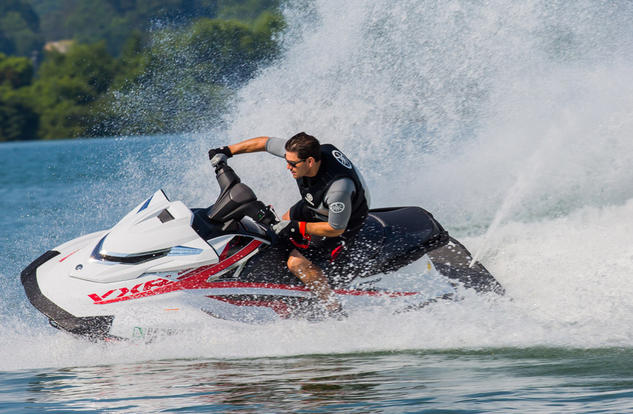
The formula for success remains simple: pack a lot of horsepower in the lightest deck-and-hull combo possible.
COMPARISON: Read our review of the 2016 Yamaha FZR
For the power portion of this equation, Yamaha relies on its proven 1,812cc engine, leaving off the supercharger and intercooler to further reduce weight, save fuel, and lower the boat’s price. For the most part, buyers won’t miss the supercharger’s effects. In a boat that weighs in at just 767 pounds thanks to the use of the brand’s proprietary NanoXcel hull material, that engine alone – still the biggest displacement offered in the industry – is enough to push the VXR past 30 mph in as little as 1.8 seconds and power the boat to a top speed of 65 mph with a relatively light load and good conditions.
That, after all, is the goal. Flagship performance at a bargain price tag.
Performance, however, is not all about speed. Handling plays an equal role. Yamaha retooled the VXR in 2015, lengthening and widening the hull, reshaping the keel and strakes, softening the chines forward, and altering the intake area of the jet pump. Along with a new ride plate design, the end result is a sharper handling, less “twitchy” boat than its predecessor. Riders won’t have to shift their weight as much to find the perfect cornering stance. The hull is also more stable and predictable, darting in and out of high-speed corners with precise control. Use the electronic trim to drop the bow in the corners for added bite, then trim the bow up for enhanced top speed. It’s a welcome change from the manual, twist-grip trim of old.
Yes, this is still a craft that demands your full attention. After all, there’s a lot of power on tap here for such a light, agile machine. But more than ever before, riders now have the confidence to see what it can truly do.
Enhanced Control

The focus isn’t entirely stripped-down performance. Included in the mix is Yamaha’s RiDE system, a concept that uses a secondary throttle for both reverse and stopping control at speed. That second throttle is located on the left side of the handlebars, a mirror image to the conventional throttle. It’s linked electronically to the reverse bucket, and will override the normal throttle when activated. Should you want to rapidly slow for a turn or avoid an obstacle, a pull on the RiDE lever drops the bucket into the pressure-driven water exiting the pump, redirecting it to the sides. The boat rapidly slows, while maintaining a level attitude and not losing steering control. It’s a fluid transition, meaning you can rapidly decrease speed and then immediately get back on the throttle with no lag in response.
COMPARISON: Read our review of the 2015 Sea-Doo GTR 215
RiDE also activates when you start the boat, allowing it to come to life in a neutral position. Backing up is accomplished by pulling the RiDE lever, going forward by squeezing the throttle. In my experience, it takes just minutes to get completely comfortable with the system, all while keeping your eyes focused on the water rather than looking for a console-mounted lever. My only word of caution is to be prepared for how much thrust is available in reverse, as it’s more than most craft have at their disposal.
Eyes On The Prize
Elsewhere, the Yamaha VXR maintains its focus, but does offer up the necessary basics. One of the most appreciated may be the saddle, with its beefy bolster and grippy, race-inspired texture designed to lock the driver in place while offering additional low-back support.
COMPARISON: Read our review of the 2014 Kawasaki Jet Ski Ultra LX
Yamaha’s key fob security remote prevents the engine from being started for theft prevention, and can do double duty by activating a slower speed mode that’s great for newcomers or when wanting to limp home on minimal fuel. Hydro-Turf mats offer the necessary traction when pushing the boat through aggressive turns. Storage and fuel capacity measure in at a respective 24.6 gallons and 18.5 gallons each.
 The Yamaha VXR offers flagship-like performance without the extras that drive up the price.
The Yamaha VXR offers flagship-like performance without the extras that drive up the price.Nothing else, however, is really necessary. Acceleration, speed, and handling comparable to a flagship remain the goal here, at a far more affordable price tag. For those willing to give up a few bells and whistles to maintain that focus, the Yamaha VXR continues to be a winning choice.
| 2015 Yamaha VXR Specs | |
| Length | 131.9 inches |
| Beam | 48.0 inches |
| Dry Weight | 767 lbs |
| Engine | Four-cylinder EFI |
| Displacement | 1,812 cc |
| Bore and Stroke | 86mm x 78mm |
| Compression Ratio | 11.0:1 |
| Horsepower | NA |
| Fuel Capacity | 18.5 gal. |
| Combined Stowage Capacity | 24.6 gal. |
| Colors | Pure White or Carbon Metallic w/Laser Yellow |
| Price | $11,899 |
Get PersonalWatercraft.com in your Inbox!
Like PersonalWatercraft.com on Facebook
Comments
Most Popular
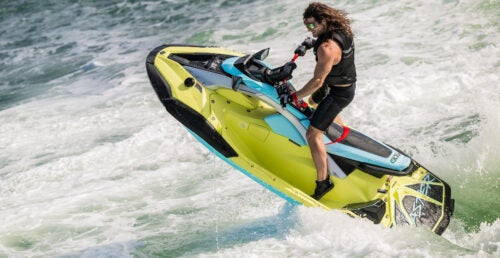
2025 Yamaha JetBlaster PRO 2-Up Review
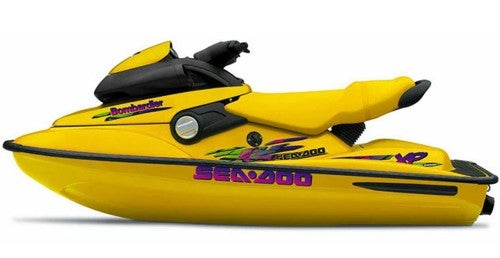
Remembering the Sea-Doo XP
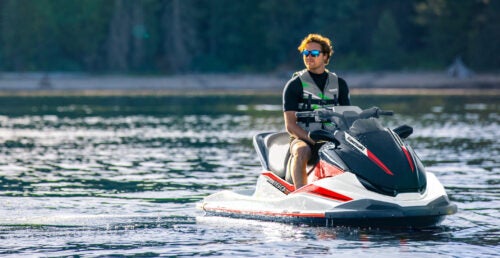
2024 Kawasaki Jet Ski STX 160X Review

Whatever Happened to the Wetbike?
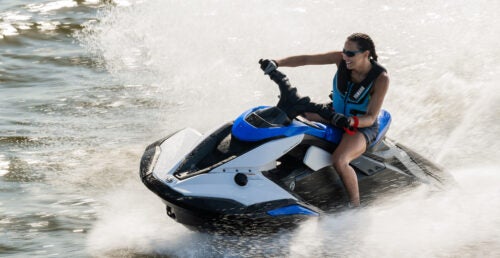
2025 Yamaha JetBlaster Review
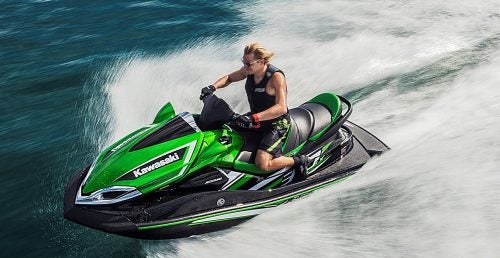
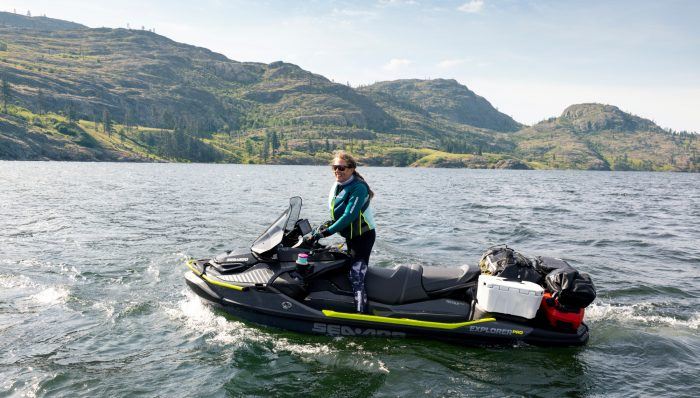
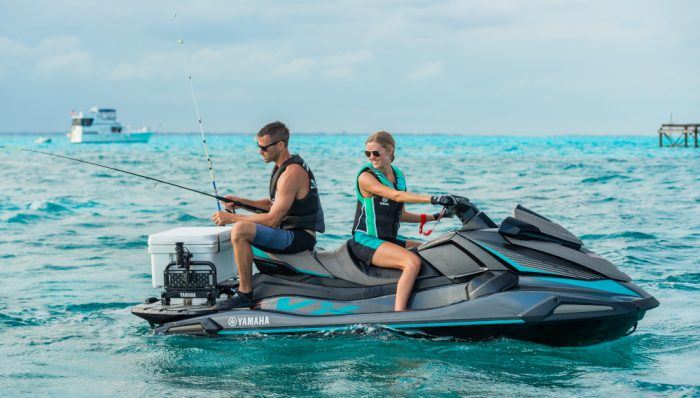
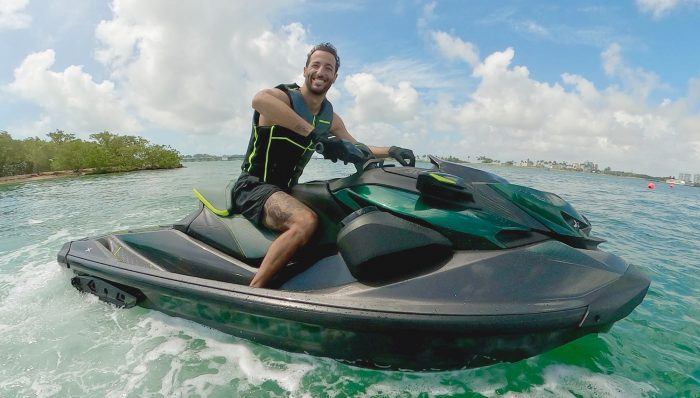
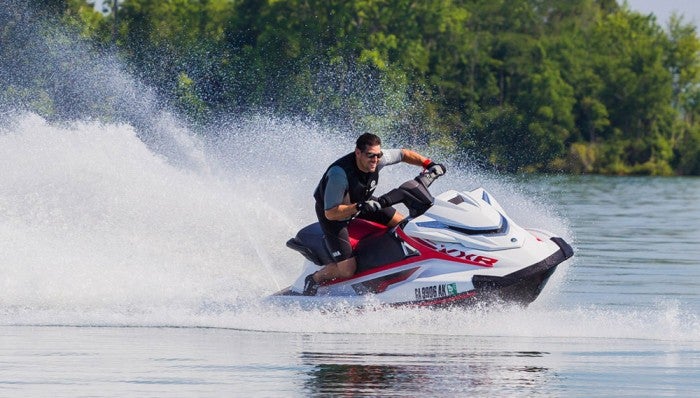

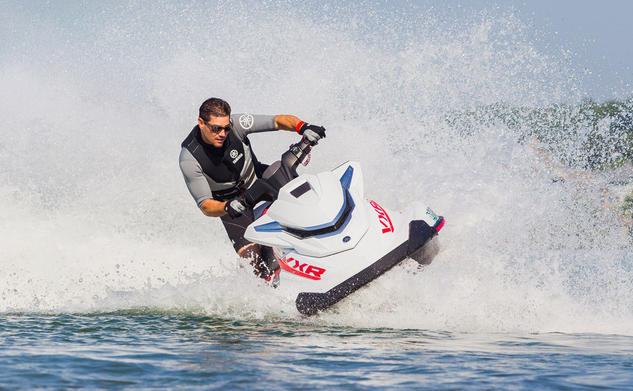


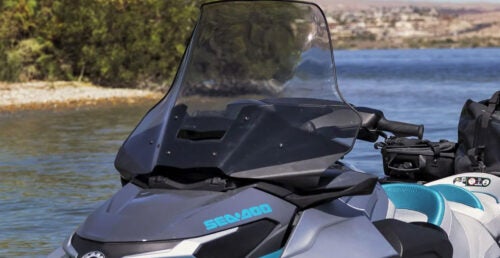
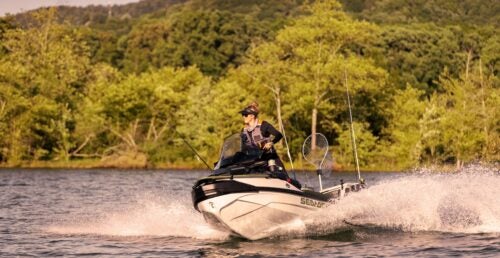


 Your Privacy Choices
Your Privacy Choices